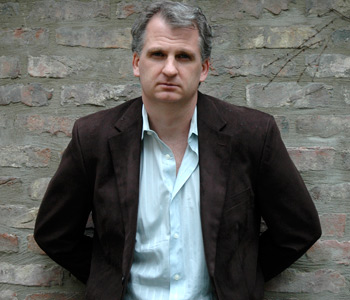Seo-Young Chu
Do Metaphors Dream of Literal Sleep? A Science-Fictional Theory of Representation
Harvard University Press
316 pages, 6 x 9 1/2 inches
ISBN 978 0674055179
The main purpose of Do Metaphors Dream of Literal Sleep? is to offer a science-fictional theory of representation.
Most people think of science fiction as a genre devoted not to the representation of reality but to the imagining of places and things that have no real existence. I argue that science fiction does refer to reality. The objects of science-fictional representation do have real existence. But unlike the kinds of objects associated with realism (objects like, say, the apple that you may have eaten this morning), the objects represented in science fiction defy simple comprehension.
Consider, for example, the globalized world. The main reason why the globalized world resists straightforward comprehension is the fact that its literal dimensions operate independently of its figurative dimensions.
Literally the globalized world is a concrete object that possesses measurable dimensions (e.g., a radius of approximately 6,378 kilometers). Figuratively the globalized world is a nebulous and ever-changing web where two people separated by vast physical distance might feel as if they’re actually sitting face-to-face while talking to each other through Skype.
Video conferencing, jet planes, inexpensive cell phones, and other globalizing technologies have created a chasm between the literal and figurative dimensions of our world—a chasm that we perceive through hallucinatory effects including culture shock and jetlag.
Realism, or what most people call “realism,” is inadequate to the task of rendering such elusive phenomena fully available for representation. But science fiction—a narrative universe wherein the literal and the figurative share ontological status—can accommodate representations of the globalized world and other such phenomena that elude the literal/figurative dichotomy.
To cite a well-known instance from popular culture: the superhuman powers of mutant X-Men (e.g., teleportation) literally embody the figures of speech that we often invoke to describe how globalization has transformed our experience of space and time (e.g., globalization is figuratively “shrinking” our planet).
The five chapters of Do Metaphors Dream of Literal Sleep? examine five elusive phenomena that have found a representational home in science fiction: the globalized world, cyberspace in the 1990s, war trauma, postmemory han (a Korean American type of inherited trauma), and robot rights.
Each chapter of the book addresses (1) what makes this particular referent so elusive and (2) how specific works of science fiction overcome the difficulty of rendering this particular referent available for representation.

Science fiction is an art form in which lyric figures of speech are systematically literalized and consolidated as features of narrative worlds.
Do Metaphors Dream of Literal Sleep? challenges two key misconceptions about science fiction.
The first misconception, which I already addressed, is the notion that science fiction is devoted not to the representation of reality but to the imagining of places and things that have no real existence.
The second misconception: science fiction and lyric poetry are two unrelated art forms.
Poems rarely show up on syllabi for courses on science fiction. Anthologies of science fiction consist almost exclusively of short stories and novel excerpts. Many literary dictionaries explicitly define science fiction as a prose genre—despite the verifiable existence of science-fictional verse. If you ask a colleague to name one science-fiction poem, he or she will likely be unable to produce an answer. If you ask the same colleague to name a science-fiction novel or film, he or she will likely be able to offer at least a few titles.
The absence of poetry from discussions of science fiction has long puzzled me. Both poetry and science fiction resound with voices that speak from beyond linear time. Both are inherently musical art forms. Both are vividly expressive of heightened or eccentric states of consciousness. Perhaps most important: both are characterized by an intensity of figurative language.
Science fiction is an art form in which lyric figures of speech are systematically literalized and consolidated as features of narrative worlds. Personification, for instance, is literalized each time a humanoid robot comes to life. And apostrophe—a lyric trope whereby a speaker addresses an absent or inanimate person as though the “you” were alive and attendant—is routinely literalized in science fiction as telepathy, whereby a speaker addresses an absent person who is actually alive, mentally present, and capable of listening to the speaker without the aid of telephones or even ears.
In the process of writing Do Metaphors Dream of Literal Sleep? I came to the following realization: lyric poetry is so pervasive in science fiction, so thoroughly characteristic of science fiction, that its presence need not take the physical shape of verse in order to make itself felt in a science-fiction narrative.
Paradoxically, then, the presence of lyric poetry in science-fiction narrative is an absent presence.
I believe that this paradox helps to explain why the study of science fiction in lyric terms has remained a largely unexplored territory—one that I open up to investigation.
Furthermore, I believe that science fiction’s dual status as both narrative and lyric is precisely what enables science fiction to do such massively sophisticated representational work. Only a narrative form thoroughly powered by lyricism possesses enough torque—enough twisting force, enough verse (from “vertere,” Latin for “to turn”)—to convert an elusive referent into an object available for representation. Only a form in which poetic tropes (from “tropos,” Greek for “turn”) are systematically turned into narrative literalities can accommodate referents ordinarily averse to representation.
Let’s return to the example of the globalized world. When we talk about globalization, we inevitably resort to metaphors: globalization “compresses” distance; we live in a “global village,” etc.
In ordinary discourse, such metaphors are left un-literalized; they stay at the level of abstraction. Science fiction activates the explanatory power of such metaphors by literalizing them as features of coherent narrative environments.
For instance, in Karen Tei Yamashita’s 1997 novel Tropic of Orange, the latitudinal Tropic of Cancer literally collides with Los Angeles, where widespread disorientation ensues. It’s one thing to say metaphorically: “Globalization compresses distance.” It’s another thing altogether to literalize this metaphor into a richly elaborated narrative experience of spatial warping that kinesthetically makes sense to the reader’s nerves and muscles.
Science fiction allows lyric figures to operate on a kinesthetic/literal/narrative level without losing their conceptual/figurative/lyric power.
Consequently, science fiction can accommodate representations of phenomena that are themselves neither purely literal nor purely figurative (e.g., cyberspace, globalization, war trauma).
In the introduction I make what is probably the book’s most counterintuitive claim—that science fiction and lyric poetry are intimately interconnected.
From page 11 to page 63 of Do Metaphors Dream, I try to give the reader a sense of the astonishing wealth of evidence substantiating the likenesses between science fiction and lyric poetry. To demonstrate the systematic nature of lyric’s omnipresence in science fiction, I’ve arranged the evidence taxonomically and attempted to make the collection of examples as comprehensive as possible.
The texts encompass film, concept art, drama, short stories, novels, and more. Chronologically they span four centuries. Authors range from those established in the “western canon” (e.g., Swift, Shelley, Orwell) to those not yet canonized (e.g., Nalo Hopkinson, Ted Chiang). They include both writers of “hard” science fiction (e.g., Greg Bear, Arthur C. Clarke, and other rigorously scientific novelists) and writers of “soft” science fiction (e.g., Ray Bradbury, Margaret Atwood, and others whose science fiction is inspired more by the social than by the natural sciences). Moreover, the authors include not only prose stylists celebrated for their lyricism (e.g., Samuel Delany, China Miéville, Michael Cunningham) but also writers who are not often considered lyrical stylists (e.g., Larry Niven, Isaac Asimov).
Even if the introduction does not succeed in convincing the reader of the inherent lyricism of science fiction, the catalogue from page 11 to page 63 can be used as a kind of annotated bibliography inciting the reader to check out books, films, and other texts that he or she might otherwise have overlooked.
The introduction is also where I outline the five chapters of the book. From page 69 to page 73, I provide detailed abstracts of all five chapters. Readers can use these abstracts to determine which chapter(s) will resonate with their own interests: a scholar of transnational studies, for instance, will easily identify chapters one and four as especially relevant, while a roboticist will gravitate toward chapter five.

I hope that this book will promote the use of science fiction as a language for exploring everyday existence.
I hope that this book will foster dialogue between those who read/write/study poetry and those who read/write/study science fiction.
I hope that this book will encourage readers to approach poems as works of science fiction. (Why not read Dickinson’s “I felt a Funeral, in my Brain” as a science-fictional narrative?)
I hope that the aforementioned catalogue of instances of lyricism in science fiction will eventually find itself reincarnated as a searchable online database to which numerous contributors could add new entries or update information. Despite my attempts at inclusiveness, the catalogue right now is painfully incomplete. Most of the authors cited are Anglophone. Moreover, certain types of media are underrepresented. If I could rewrite the introduction, I would add videogames such as Mass Effect, DOOM, BioShock, Halo, and Metroid, not to mention scenes from The X-Files, Doctor Who, Fringe, The Twilight Zone, Buffy the Vampire Slayer, Supernatural, Star Trek: TNG …The list is never-ending, and an online database would have the capacity not only to contain ever-proliferating entries but also to store audiovisual clips and high-resolution images.
I hope that this book will promote the use of science fiction as a language for exploring everyday existence. Since all reality is to some degree elusive, all representation is to some degree science-fictional. What most call “realism” is actually a low-intensity variety of science fiction, one that requires little energy to accomplish its representational work insofar as its referents (e.g., softballs) are readily susceptible to representation. What most call “science fiction” is actually a high-intensity variety of realism, one that requires astronomical levels of energy to accomplish its work insofar as its referents (e.g., catastrophic trauma) defy simple representation. The continuum shared by “realism” and “science fiction” parallels the continuum shared by all referents—from wind-up clocks and nickels to quantum-logic clocks and financial derivatives. In a world where the referents constituting everyday reality grow increasingly resistant to representation (the global, for instance, is more elusive than the local; Korean American identity is more elusive than Korean identity), science fiction becomes an increasingly suitable language for handling “mundane” reality.
Do Metaphors Dream of Literal Sleep? is a fragment of a hypothetical mega-book containing an infinite number of chapters corresponding to the infinite sum of referents that compose reality. I hope that at least a few readers will want to help complete the immensely larger book of which Do Metaphors Dream is but one piece.




We don't put paywalls. We don't distract you with ads. We don't sell your data.
Please help to keep this running!